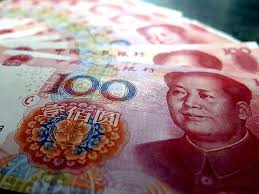
According to a research released on Thursday by senior analyst Yunbang Xu of S&P Global Ratings, China's fiscal stimulus is becoming less successful and is primarily being used as a means of buying time for its industrial and consumption programmes.
The fiscal boost was measured by the analysis using growth in government spending.
Fiscal stimulus, according to Xu, is a buy-time tactic with potential longer-term advantages if projects are concentrated on boosting consumption or upgrading industries to provide more value-added.
China's GDP growth target for this year is estimated to be approximately 5%, which many observers have deemed unrealistic considering the extent of the announced stimulus.
China will "strengthen macroeconomic policies" and improve coordination across fiscal, monetary, employment, industry, and regional policies, according to the chairman of the country's main economic planning agency's statement from March.
Regardless of whether a city is categorised as a high- or low-income region, high debt levels restrict the amount of fiscal stimulus a local government may implement, according to the S&P assessment.
According to the paper, public debt as a percentage of GDP can vary from approximately 20% in Shenzhen, a wealthy city, to 140% in Bazhong, a much smaller, impoverished city located in the southwest of Sichuan province.
“Given fiscal constraints and diminishing effectiveness, we expect local governments will focus on reducing red tape and taking other measures to improve business environments and support long-term growth and living standards,” S&P’s Xu said.
“Investment is less effective amid [the] drastic property sector slowdown,” Xu added.
Official data issued this week indicates that fixed asset investment for the year increased in March compared to the first two months of the year, mostly due to an acceleration of investment in manufacturing. Investment in real estate fell even more, while infrastructure investment delayed growth.
Earlier in the year, the Chinese government revealed intentions to boost domestic demand through consumer product trade-ins and equipment improvements, along with other incentives and subsidies. Official estimates state that the measures will result in yearly equipment spending of well over 5 trillion yuan ($704.23 billion).
Last week, officials assured reporters that the central government would financially "strongly support" these enhancements.
According to S&P, statistics from 2020 to 2022 showed that fiscal stimulus programmes implemented by local governments had, on average, been larger and more successful in wealthier cities.
“Higher-income cities have a lead because they are less vulnerable to declines in property markets, have stronger industrial bases, and their consumption is more resilient in downturns,” Xu said in the report. “Industry, consumption and investment will remain the key growth drivers going forward.”
“Higher-tech sectors will continue to drive China’s industrial upgrade and anchor long-term economic growth,” Xu said. “That said, overcapacity in some sectors could spark price pain in the near term.”
(Source:www.cnbc.com)
The fiscal boost was measured by the analysis using growth in government spending.
Fiscal stimulus, according to Xu, is a buy-time tactic with potential longer-term advantages if projects are concentrated on boosting consumption or upgrading industries to provide more value-added.
China's GDP growth target for this year is estimated to be approximately 5%, which many observers have deemed unrealistic considering the extent of the announced stimulus.
China will "strengthen macroeconomic policies" and improve coordination across fiscal, monetary, employment, industry, and regional policies, according to the chairman of the country's main economic planning agency's statement from March.
Regardless of whether a city is categorised as a high- or low-income region, high debt levels restrict the amount of fiscal stimulus a local government may implement, according to the S&P assessment.
According to the paper, public debt as a percentage of GDP can vary from approximately 20% in Shenzhen, a wealthy city, to 140% in Bazhong, a much smaller, impoverished city located in the southwest of Sichuan province.
“Given fiscal constraints and diminishing effectiveness, we expect local governments will focus on reducing red tape and taking other measures to improve business environments and support long-term growth and living standards,” S&P’s Xu said.
“Investment is less effective amid [the] drastic property sector slowdown,” Xu added.
Official data issued this week indicates that fixed asset investment for the year increased in March compared to the first two months of the year, mostly due to an acceleration of investment in manufacturing. Investment in real estate fell even more, while infrastructure investment delayed growth.
Earlier in the year, the Chinese government revealed intentions to boost domestic demand through consumer product trade-ins and equipment improvements, along with other incentives and subsidies. Official estimates state that the measures will result in yearly equipment spending of well over 5 trillion yuan ($704.23 billion).
Last week, officials assured reporters that the central government would financially "strongly support" these enhancements.
According to S&P, statistics from 2020 to 2022 showed that fiscal stimulus programmes implemented by local governments had, on average, been larger and more successful in wealthier cities.
“Higher-income cities have a lead because they are less vulnerable to declines in property markets, have stronger industrial bases, and their consumption is more resilient in downturns,” Xu said in the report. “Industry, consumption and investment will remain the key growth drivers going forward.”
“Higher-tech sectors will continue to drive China’s industrial upgrade and anchor long-term economic growth,” Xu said. “That said, overcapacity in some sectors could spark price pain in the near term.”
(Source:www.cnbc.com)





